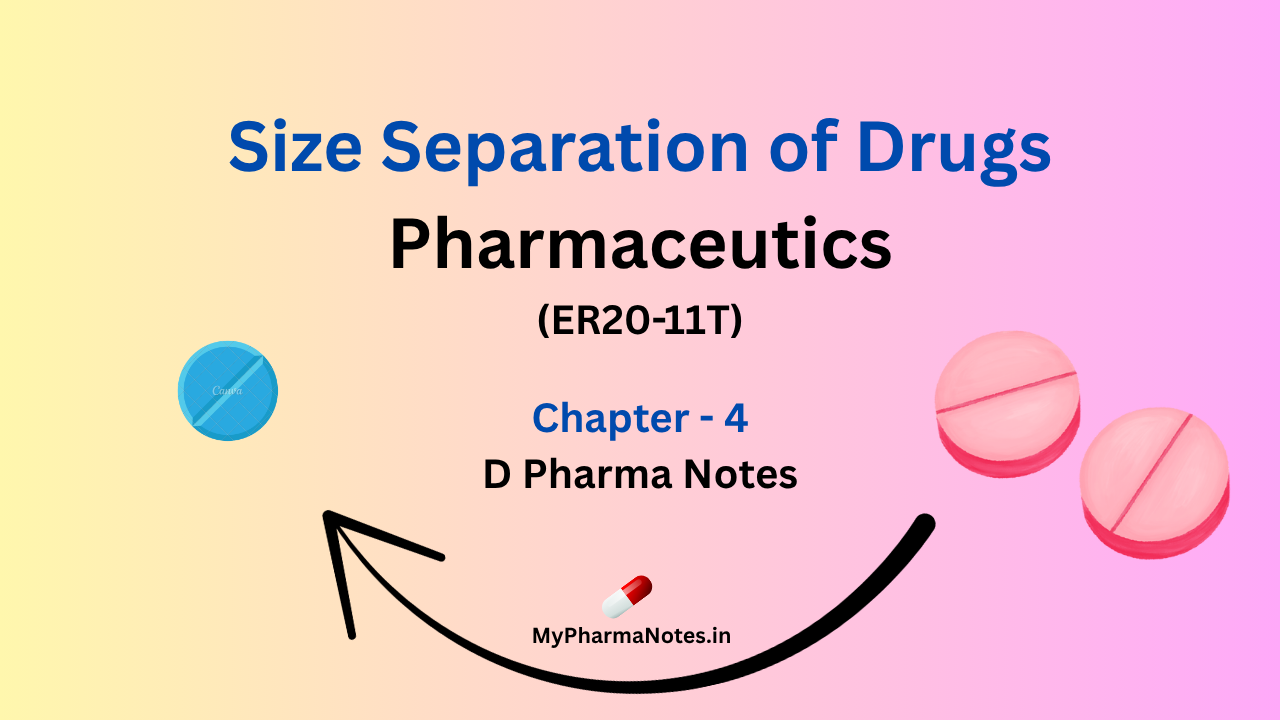Table of Contents
Definition of Size Separation
- Size Separation is a unit process that involved the separation of a mixture of various size particles into two or more portion by means of screening surface or by shifting. it is also known as sieving, sifting, and screening.
- Size separation technique is based on different physical properties of the separating mixture or substance like size, shape and density.
- Initially crude drugs (Nuxvomica, Rauwolfia, Ephedra, Ashoka etc.) are present in large size but involvement of size reduction and size separation we are obtain the desired size granules and particles and improve the pharmaceutical and pharmacological activity.
Objectives of size separation
- Size separation technique determines the particle size for the production of tablets capsules, suspension and emulsion etc.
- Due to separation, we obtain the desired granules or particles and ensure their flowability and uniformity.
- Undesirable substances are removed by the size separation technique.
- By obtaining the desired size particles we improve the mixing properties of the powders.
- To improve the solubility and stability of particles during production.
- Size separation technique optimize feed rate, agitation, screening during production.
- Quality control of raw materials.
Classification powder according to IP (Indian Pharmacopeia)
- Official standards for powders accoding to Indian pharmacopoeia.
- The Indian Pharmacopoeia has defined the standard of powder for Pharmaceutical purpose.
- The Indian Pharmacopoeia specified five grade of powder:
- Coarse powder: – A powder of which all the particles pass through a No.10 sieve with nominal mesh aperture of 1.7mm and not more than 40.0 percent through a No.44 sieve with nominal mesh aperture of 355µm, this is usually referred to as a 10/44 powder or coarse powder.
- Moderately coarse powder: – A powder of which all the particle pass through a No.22 sieve with the nominal mesh aperture of 710µm and not more than 40.0 percent through a No.60 sieve with nominal mesh aperture of 250µm, this is usually referred as a 22/60 powder or moderately coarse powder.
- Moderately fine powder:- A powder of which all the particle pass through a No.44 sieve with the nominal mesh aperture of 355µm and not more than 40.0 percent through a No.85 sieve with nominal mesh aperture of 180µm, this is usually referred as a 44/85 powder or moderately coarse powder.
- Fine powder: – A powder of which all the particles pass through a No.85 sieve with nominal mesh aperture of 180µm, it is called as fine powder.
- Very fine powder: – A powder of which all the particles pass through a No.120 sieve with nominal mesh aperture of 125µm, it is called as fine powder.
| S. No. | Grade of Powder | All Particles must pass through Sieve No./Nominal mesh aperture | Sieve through which 40% of the particles pass/ Nominal mesh aperture | Comparison of powder size |
|---|---|---|---|---|
| 1 | Coarse powder | 10/(1.70mm) | 44/(355µm) | 1 |
| 2 | Moderately coarse powder | 22/(710µm) | 60/(250µm) | 1/6 |
| 3 | Moderately fine powder | 44/(355µm) | 85/(180µm) | 1/24 |
| 4 | Fine powder | 85/(180µm) | Not Specified | 1/90 |
| 5 | Very Fine Powder | 120/(125µm) | Not Specified | 1/2000 |
